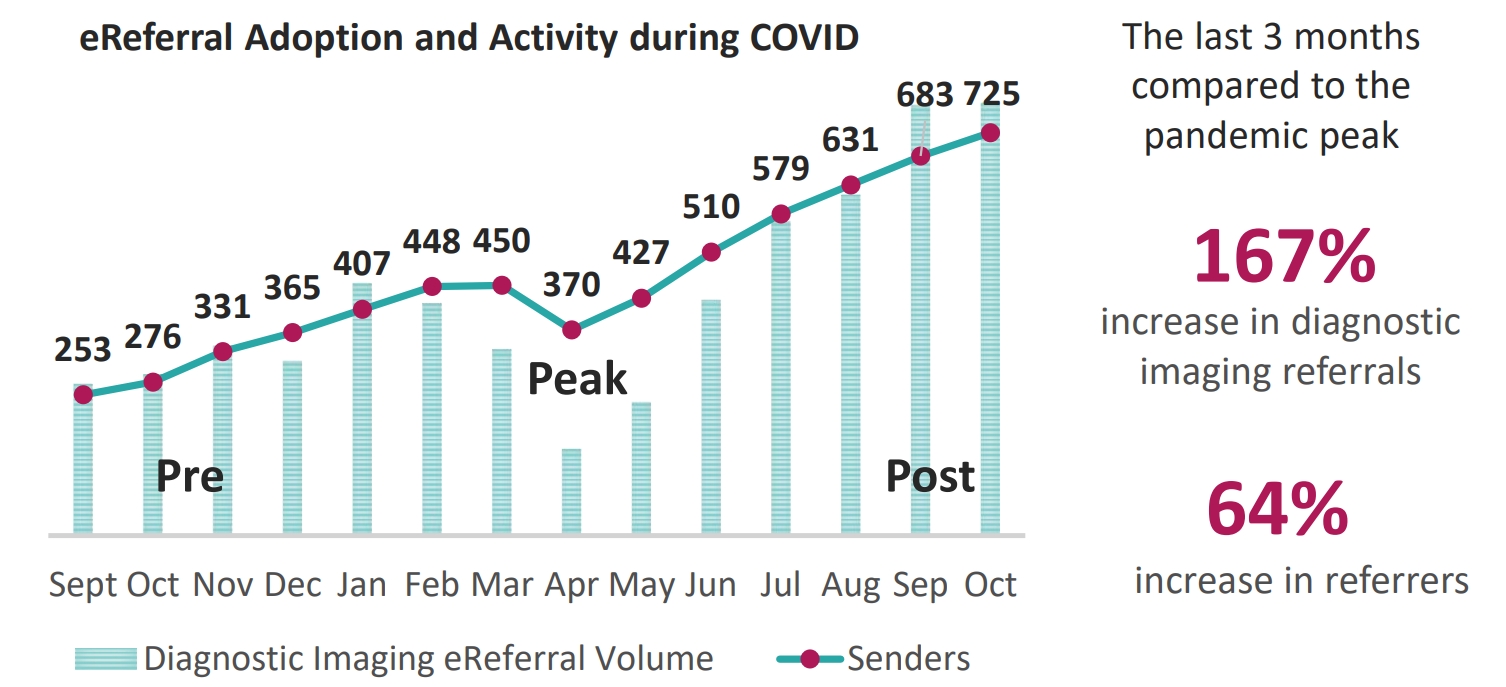eReferral Adoption Strategies throughout the COVID-19 Pandemic
Change Management Strategies during the Pandemic:
- Remote training, targeted live webinars and myth-busting engagement sessions
- Maintaining open lines of remote communication and regular check-ins
- Newsletters to keep users informed, highlighting tips and tricks
- Promoting and leveraging eReferral technology and enhancements
Key takeaways
Adapting change management tactics and clinical engagement strategies has resulted in increased adoption of electronic referral, supporting a quick rebound post first wave of the COVID-19 pandemic.

Having a one-on-one demo and sending links to instructions with attachments so that I can practice on my own; extending an ongoing offer to support as needed down the road, providing direct contact information, and welcoming callbacks numerous times if there were questions, was helpful!
Nurse Practitioner
Post-Training Survey OH-West
Interested in learning more?
Interested in partnering with us or learning more about
what we can offer you? Please reach out here.
Get the latest resources and insights
-

eReferral and patient communication in care transitions
Patient-centred care (PCC) is a priority for the Ontario Ministry of Health (MOH).1 Communication between…
-

eConsult and eReferral supporting Mental Health & Addictions (MHA) Care
Mental illness is experienced by one in five Canadians in any given year1. Wait times…
-

Webinar Highlights: Optimizing Primary Care Efficiency Through Integration and Team Collaboration
Our recent webinar, “Optimizing Primary Care Efficiency Through IHP Integration and Team Collaboration,” led by…
-

A case study on introducing neighbourhood-level marginalization data into the EMR using bot technology
Social determinants of health (SDoH) are social factors, including education, housing, employment, and social support,…